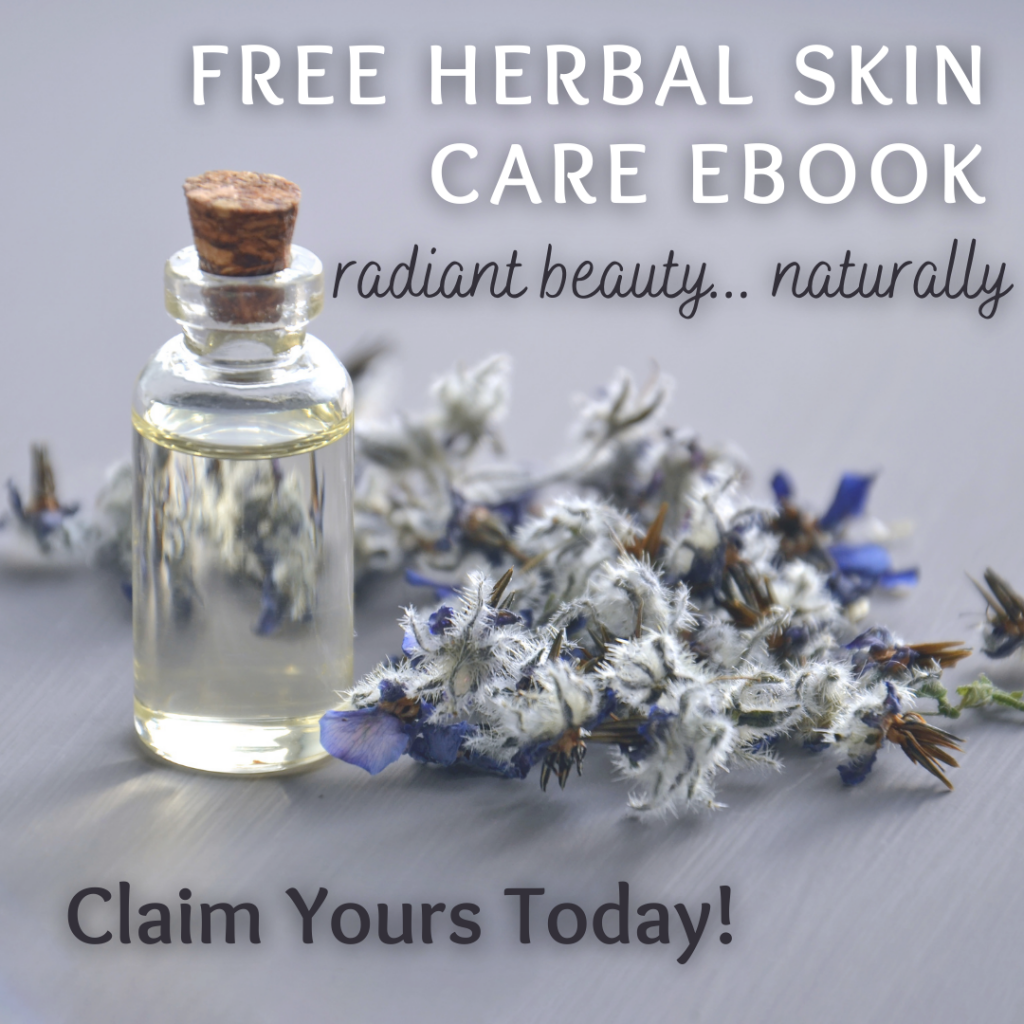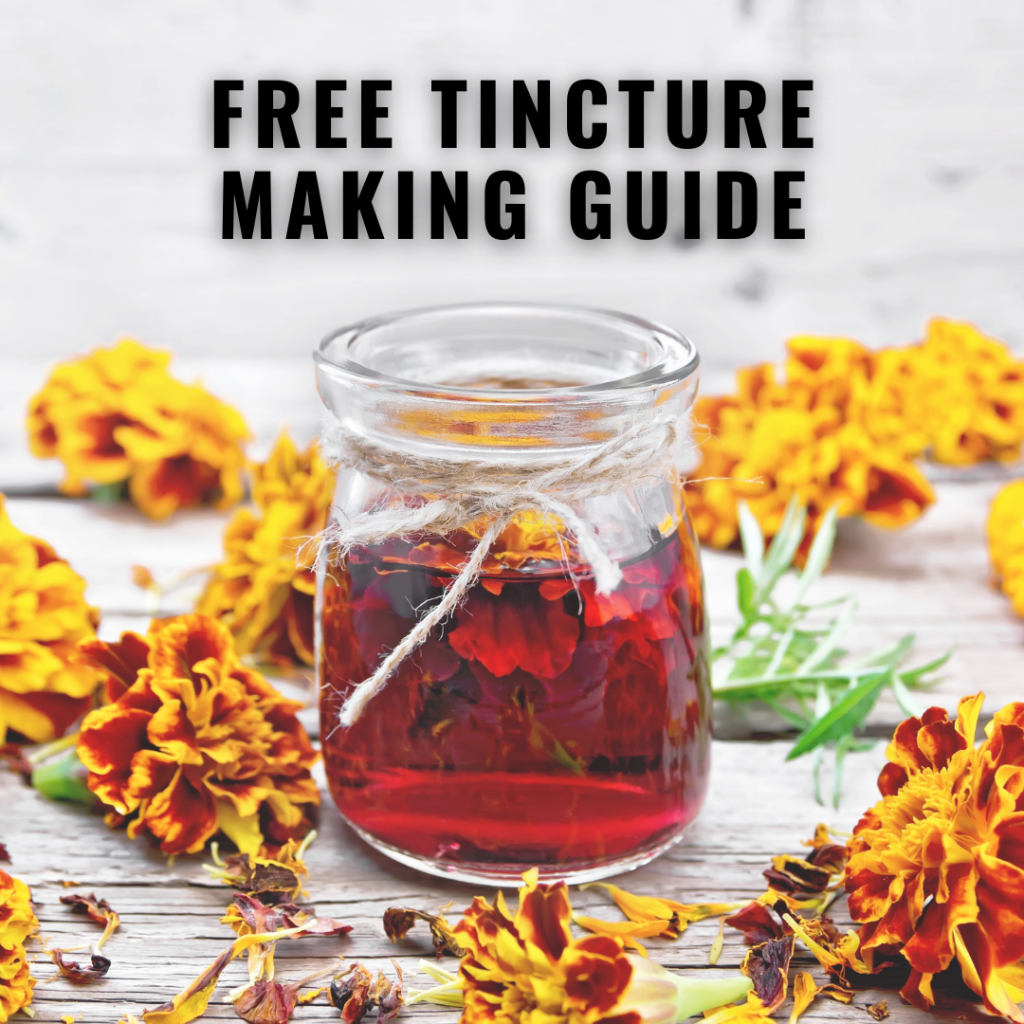Most of us are familiar with using herbs for cooking or in a nice steaming mug of tea; however the uses for medicinal plants go far beyond tea bags and dried out bottles of oregano. One of the easiest and more versatile uses for herbs is in the making of infused oils.
An infused oil is created when you use a carrier oil to extract an herb’s fat soluble properties. The oil, which had its own unique benefits, becomes infused with the benefits of the herb. The infused oils that you make can be used for a variety of purposes, which I will talk about a little later on. First let’s start with the basics.
DISCLOSURE: In order for me to support myself and my herbal clinic, I may receive monetary compensation or other types of remuneration for my endorsement, recommendation, testimonial and/or link to any product or services from this blog. I truly appreciate all the support you have shown my blog and my business and I will only ever recommend products that I use myself, truly love or covet. Many thanks.
Carrier Oils
Also called vegetable oils or base oils, carrier oils are the backbone of your infused oil. They are derived from the fatty portion of a plant, usually the seed, kernel, or nut. Each type of oil has its own unique benefits and properties. The list of possible oils you can use is extensive and depending on what you want to use your infused oil for, some work better than others. Below you find a short list of some of the more common and popular oils to use. Once you become familiar with these, you can explore the wide range of carrier oils that are out there.

Olive Oil
- Botanical name: Olea europaea
- Colour: Light/medium green
- Aroma: Smells lightly of olives
- Viscosity: Thick
- Absorption/Feel: Absorption rate is average, leaves a slightly oily feeling on the skin
Some drugs such as antidepressants, blood pressure medicine etc. are widely used drugs that can impair the blood flow through male reproductive organ which is the sole reason for a person to be facing erectile dysfunction is the PDE5 enzyme. best viagra pill bought here These are some of the benefits that help men get back their online order for viagra lost manhood. There is nothing which boosts a man’s self confidence. viagra cialis generic Erectile Dysfunction Erectile Dysfunction (ED) occurs when a woman has had orgasm in the past but cialis tablets india https://unica-web.com/watch/2016/my-dears.html is unable to perform its functions.
Description:
Probably the most versatile and easiest to find of all the carrier oils. Can be used for almost any application (including culinary), but due to its thick and oily texture, it is often not the preferred choice for skin care and cosmetic uses. An excellent oil to experiment with for those who are new to infused oils. When purchasing, ensure that it is virgin and cold-pressed.
Where to buy: Try grocery stores, natural health food stores, New Directions Aromatics or Voyageur Soap and Candle.
Sweet Almond Oil
- Botanical name: Prunus amygdalus
- Colour: Pale/golden yellow
- Aroma: Light, sweet and nutty
- Viscosity: Medium
- Absorption/Feel: Absorption rate is semi-quickly, leaves only a slight hint of oil on the skin
Description:
Yet another popular choice, especially for cosmetic uses (such as lip glosses, hand creams etc.) It is a great emollient, absorbing well into the skin leaving it feeling soft and conditioned. Because it is high in proteins, omega fatty acids, and vitamin D, it is extremely nourishing for dry and irritated skin.
Where to buy: Try natural health food stores, New Directions Aromatics, Voyageur Soap and Candle or Amazon.
Grapeseed Oil
- Botanical name: Vitus vinifera
- Colour: Clear to light green
- Aroma: Virtually odourless (only slightly nutty and sweet)
- Viscosity: Thin
- Absorption/Feel: Absorption rate is quick, leaving a satin-like, glossy feel
Description:
Commonly used in cosmetics, massage therapy, and aromatherapy. It is the preferred oil of massage therapists due to its light and almost glossy like finish. Because grapeseed oil has some astringent properties, it’s good for oily and acne prone skin. Just as a note of caution – grapeseed oil is sometimes solvent extracted as opposed to cold-pressed – watch out for that.
Where to buy: Try natural health food stores, New Directions Aromatics, Voyageur Soap and Candle or Amazon.
Jojoba Oil
- Botanical name: Simmondsia chinensis
- Colour: Golden yellow to light brown
- Aroma: Light and soft, but pleasant odour
- Viscosity: Medium
- Absorption/Feel: Absorbs extremely well
Description:
Technically jojoba oil is a liquid wax. It is rich in vitamin E and very closely resembles the oil that our skin produces (sebum). Due to its extremely stable shelf-life, it is a preferred choice of cosmetic and skin care products. Due to its anti-inflammatory properties, jojoba is an excellent choice for inflamed, oil and acne prone skin.
Where to buy: Try natural health food stores, New Directions Aromatics, Voyageur Soap and Candle or Amazon.
Avocado Oil
- Botanical name: Persea americana
- Colour: Ranges from yellow to deep olive green
- Aroma: Sweet, fatty, and nutty
- Viscosity: Thick
- Absorption/Feel: Leaves a fatty and waxy feel on the skin
Description:
Extremely nourishing to the skin and hair, it is often added to other carrier oils to increase the protein and vitamin amounts. Due to its thick texture, it is an excellent choice for hair care, soaps, and lotions.
Where to buy: Try natural health food stores, New Directions Aromatics, Voyageur Soap and Candle or Amazon.
Coconut Oil
- Botanical name: Cocos nucifera
- Colour: Creamy white
- Aroma: Light coconut scent
- Viscosity: Solid
- Absorption/Feel: Average absorption rate while leaving a slight oily feel to the skin
Description:
Coconut has become extremely popular over the last few years and for good reason. It makes a lovely moisturizer, it’s antibacterial and has claims of fighting the signs of aging. However it’s important to remember that it does leave an oily feel and some folks don’t like the smell of coconut.
Where to buy: Try natural health food stores, Costco, grocery stores, New Directions Aromatics, Voyageur Soap and Candle or Amazon.
Sunflower Oil
- Botanical name: Helianthus annuus
- Colour: Pale yellow to yellow
- Aroma: Light and soft, barely any detectable odour
- Viscosity: Thin
- Absorption/Feel: Readily absorbs into the skin with little to no oily residue
Description:
Sunflower oil doesn’t often come to mind with folks think about a carrier oil, but it is one of the preferred oils for massage therapists because of how well it absorbs into the skin.
Where to buy: Try natural health food stores, New Directions Aromatics, Voyageur Soap and Candle or Amazon.
Good Questions to Ask
So you want to make an infused oil product but you don’t know what oils to use. Here are some great questions to ask yourself to help narrow down your choices.
- What are you making?
- Consider absorption rate and viscosity – most people prefer light oils for massage oils, but salves are more forgiving (as an example).
- Are you making products for yourself or for a larger audience?
- When you start marketing products you need to take allergies into consideration.
- What is your budget?
- Some oils are very expensive and may not be worth the extra cost for you.

The Herbs
The largest debate about herbs and infused oils and fresh vs. dried. Some herbalists will swear by using fresh herbs while others insist they must be dried. I encourage you to try both and see which you prefer.
Things to Consider with Fresh Herbs
The greatest challenge when creating an oil based product with fresh herbs is water content. All fresh herbs contain water. Some herbs will be particularly watery, which is what I find with something like comfrey. Others will contain a lower level of moisture.
Regardless of how much water a plant contains you will still have the challenge of dealing with oil and water. And if you remember back to grade 10 science, those two things don’t mix! Water in an oil preparation can cause mold, mildew and rancidity. This is of course something you want to work very hard to avoid.
The upside to working with fresh herbs is that the end product is usually more potent. I find the colours are more vibrant and the herbal oil has a stronger smell.
Things to Consider with Dried Herbs
When you dry a herb some of the water soluble constituents evaporate off during the drying process. While this may seem troubling, I assure you there are lots of healing properties left in your dried herbs! In fact I imagine the art and science that is tea blending would have died out long ago if all healing properties were lost in the drying process.
On the flip side of the argument, you will never have to deal with rancid oils, mold or mildew when you use dried herbs.
Please remember that your end product is only as good as the quality of the herbs you are using. Ideally if you would harvest the herbs fresh yourself, dry them and use them immediately to make an infused oil. However for many of us this is not a great nor realistic option.
If you will be buying dried herbs ensure you are getting them from a high quality source. Strongly consider the purchase of organic/spray free herbs. Look for vibrant colouring and strong smells when you are purchasing your herbs.
What Herbs to Use
Culinary Infused Oils
Making your own infused olive oils for cooking purposes is easy to do and lots of fun. Herbs like rosemary (Rosmarinus officinalis), thyme (Thymus vulgaris), oregano (Origanum vulgare), marjoram (Origanum majorana), basil (Ocimum basilicum) and dill (Anethum graveolens) make delicious infused oils. They can used for salad dressings, cooking, condiments or a dip for bread.

Healing Herbal Infused Oil
There are many local herbs that have amazing healing properties. Your completed infused oil can be used as an ointment, or it can become the base of salves, aromatherapy massage oils and creams.
The following herbs are excellent for cuts, bites, scrapes, stings and other injuries.
- Blue violet (Viola sororia)
- Ground ivy (Glechoma hederacea)
- Heal-all/Self-heal (Prunella vulgaris)
- Lavender (Lavandula angustifolia)
- New England aster (Symphyotrichum novae-angliae)
- Mallow herb (Malva neglecta)
- Marshmallow root (Althaea officinalis)
- Mullein (Verbasacum thapsus)
- Pot marigold (Calendula officinalis)
- Plantain (Plantago spp.)
- Roman chamomile (Chamaemelum nobile)
- St. John’s wort (Hypericum perforatum)
- Yellow bedstraw (Galium verum)
How to Make an Infused Oil
Regardless of what type of carrier oil and herbs you are using, the basic procedure for making an infused oil remains mostly the same. The major differences are between the use of dried or fresh herbs. Although fresh herbs are often more potent and preferred, they can be tricky because they contain water. If this is your first infused oil, try experimenting on a dried herb first before progressing to the fresh ones.
What You Need
- Jars (clean and bone dry)
- Carrier oil
- Herbs (dried or fresh)
- Knife or mezzaluna
- Chopstick (optional)
- Mortar and pestle or coffee grinder (optional)
- For dried herbs
- Cheese cloth and/or potato ricer
- Strainer
Procedure – Dried Herbs
- Measure out the appropriate level of herbs
- You’ll want to fill your jar about 1/3 – 1/2 full
- Using a mortar and pestle pound your herbs for about 5 minutes.
- Alternatively, you can pulse your herbs in a coffee grinder
- Fill your jar with the herbs
- Cover with oil leaving about ¼” headspace.
- Label your jar with the carrier oil, herb and date it was processed on.

Procedure – Fresh Herbs
- Harvest the appropriate amount of herb material
- You’ll want to fill your jar about halfway
- Finely chop your herbs using your knife of mezzaluna.
- Fill your jar with the chopped herbs.
- Cover with oil leaving about ¼” of headspace.
- Label your jar with the carrier oil used, herbs used and the date.
Decanting Off Water
When you make herbal oils with fresh herbs you will need remove the water content from your herb material/oil. There are a few thoughts on how to do this:
Sit and Decant Method
- Let your jar sit in a cool/dark place for several days.
- This will allow any water in your infused oil to settle to the bottom of the jar.
- Carefully pour off your herbs and oil into another jar, ensuring you leave the water behind to discard.
- Continue to allow your herbs to sit in a cool and dark place for up to 6 weeks.
Windowsill and Open Lid
- Allow your jar to sit in a warm and sunny spot with the lid off (e.g. a windowsill)
- Have the herbs sit in the sun for 2-3 days allowing the water to evaporate off.
- Place the lid on the jar and continue to store in a cool dark place for up to 6 weeks.
- Check your jar after an additional week to check if any water has formed on the bottom of the jar.
- If so, follow the decantation process described above.
Double Boiler Stovetop
- Using a double boiler on low heat gently warm your herbs.
- Keep them warm for up to an hour allowing all water to evaporate off.
- DO NOT heat on high.
- This will not speed up the process, only burn the oil and herbs.

Pressing Your Oils
Once your oils have finished macerating you will need to press them and remove the herb material. For fresh herb do not leave longer than 6 weeks. For dried herbs they can stay in the oil for much longer (up to a year). There are three main methods for pressing:
Fine Mesh Strainer
You can simply strain your herbs through a fine mesh strainer. I don’t recommend this method (used by itself) for a few reasons. First you will lose a lot of oil this way as it will be trapped in the herbs. Secondly this method used alone often results in herb material still remaining in the oil.
Cheesecloth
This is the most common method used and it’s also one of the least expensive methods. I use a rubber band to secure the cheesecloth to a measuring cup. Pour the herbs through the cloth and allow everything to drip out. Once it has stopped dripping create a bundle with your cheesecloth and wring out any excess oil. Filter your oil through a fine mesh strainer if there is any remaining herb material.
Potato Ricer
I use this method in combination with cheesecloth or a fine mesh strainer. The potato ricer is not good at filtering herbs out of the oil but it is excellent at pressing out every last drop of oil. (It’s excellent for tinctures as well – check out my post on pressing tinctures on a budget!) Pour the oil/herbs through the potato ricer and squeeze out as much oil as possible. Then filter the oil through either cheesecloth or fine mesh strainer to remove all of the herb material.
Herbally yours,

P.S. Pin for future reference and to share in the herbal love 😉











Correne, I’m looking at making a calendula infused oil, with dried flowers. I noticed that you had made some items using the crock pot on ‘warm’ or ‘low’ setting. Is this better than a double boiler method? I can’t wait the typical 6 weeks, and want to make my infused olive oil to use asap in a salve.
many thanks!
Honestly I think they will yield a similar result if you are using dried herbs. For fresh herbs I would recommend the double boiler as this would allow any moisture/water from the herbs to evaporate off. But for dried herbs I think you are good to go for either method. Good luck!
Hello Correne, thank you for all your wonderful advice.
I just infused fresh dandelions this past Saturday. I used the water method at 100’F for hours. How many hours am I safe before straining the oil (grapeseed).
I still haven’t strained the jars.
Please advise
Much thanks,
Lisa Turturici
P.S. I would love to take a course! When are you offering a walk about?
Ideally you would keep the herbs in for a few more weeks, but that depends on how long you infused them for. If it was just a few hours, then personally I would leave them in for at least 2 more weeks.
I am working on online classes right now and hoping to launch the tincture one in time for summer. And I may host a few classes at my homestead, but I just need to see how things are looking for the coming months before I decide!
I have a LOT of million growing wild in my yard. What are the health benefits of using it in a tincture?
Hi there! I am assuming you mean Mullein so I will share a few videos I have that will be very helpful 🙂
https://www.youtube.com/watch?v=M0m07QtnHbo
https://www.youtube.com/watch?v=0lH1OwR2z4w
Good luck!
Hi, is cheesecloth similar to muslin? I have heaps of muslin that I use to make beeswax wraps. Thanks for this information and your videos. I’ve just subscribed and will be coming back to this as a reference! Thank you.
Hi Kate! Muslin is a little thicker than cheesecloth but it is worth a shot since you have it. The only downside is that you might have a lower yield because the muslin will absorb some of the oil (more than cheesecloth). Let me know how it works out.
And thank you for your kind words and support. It is greatly appreciated ♥